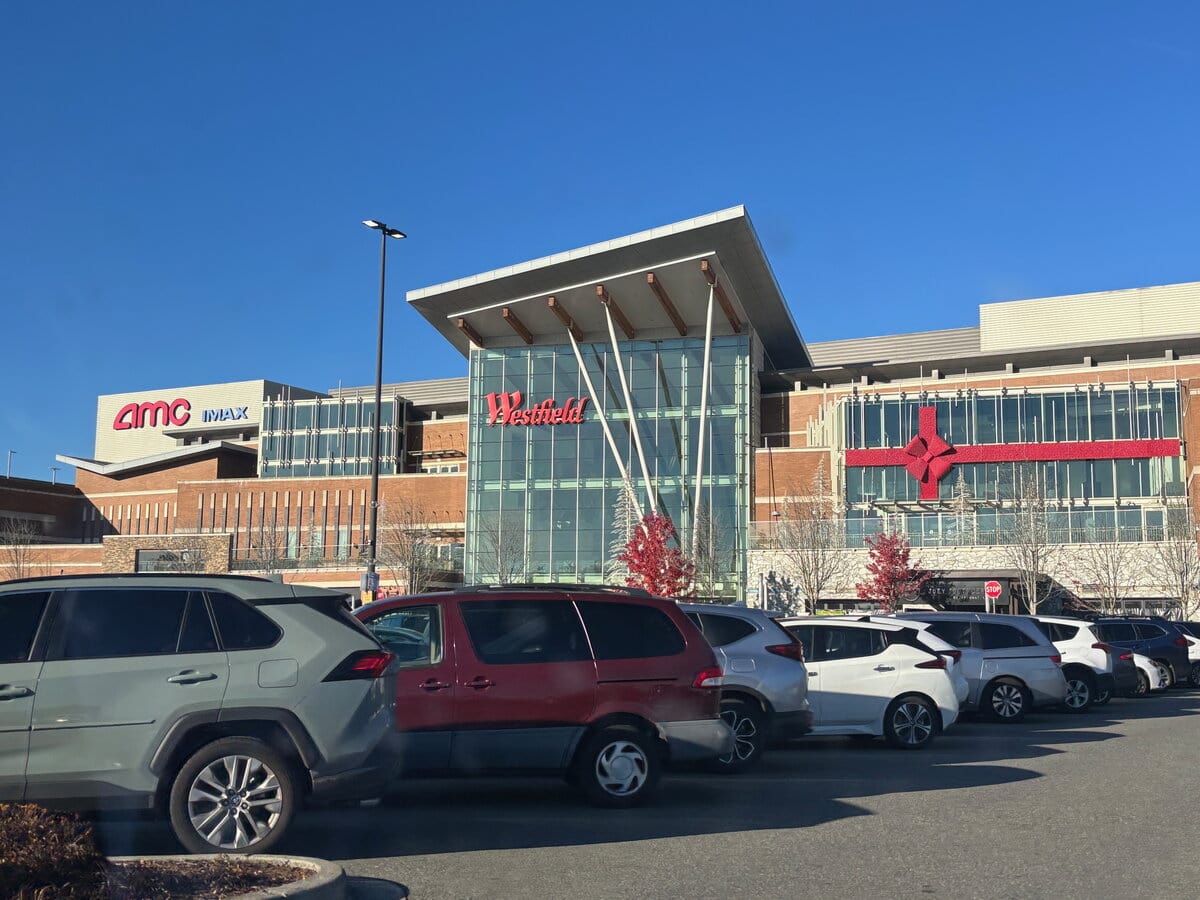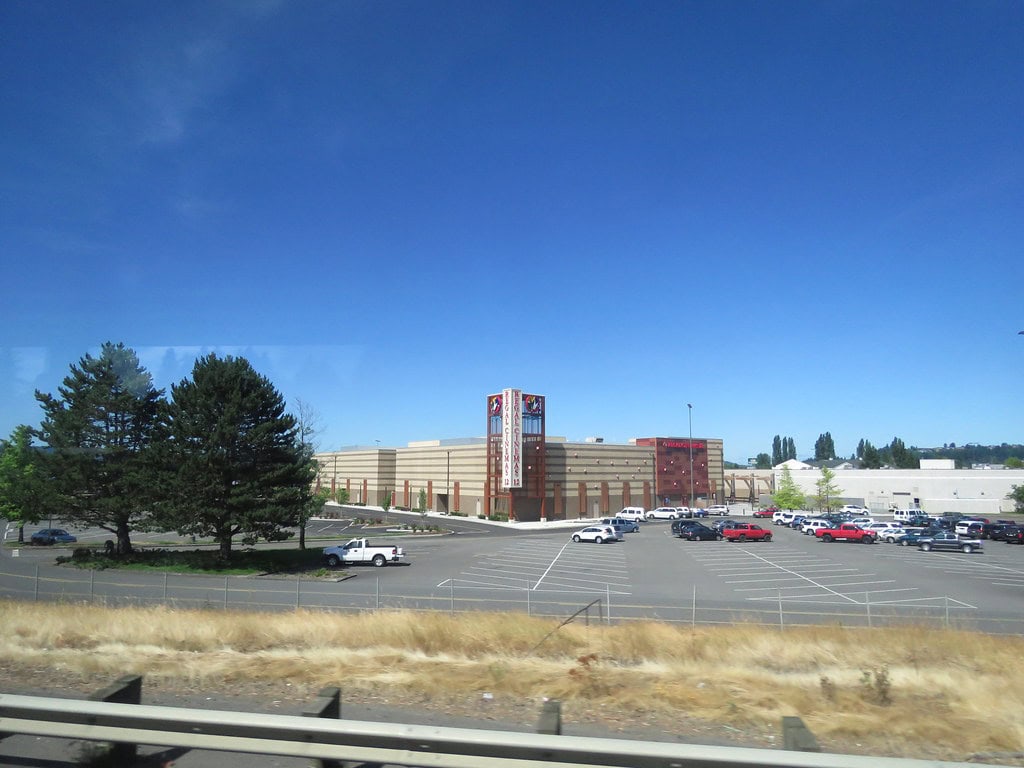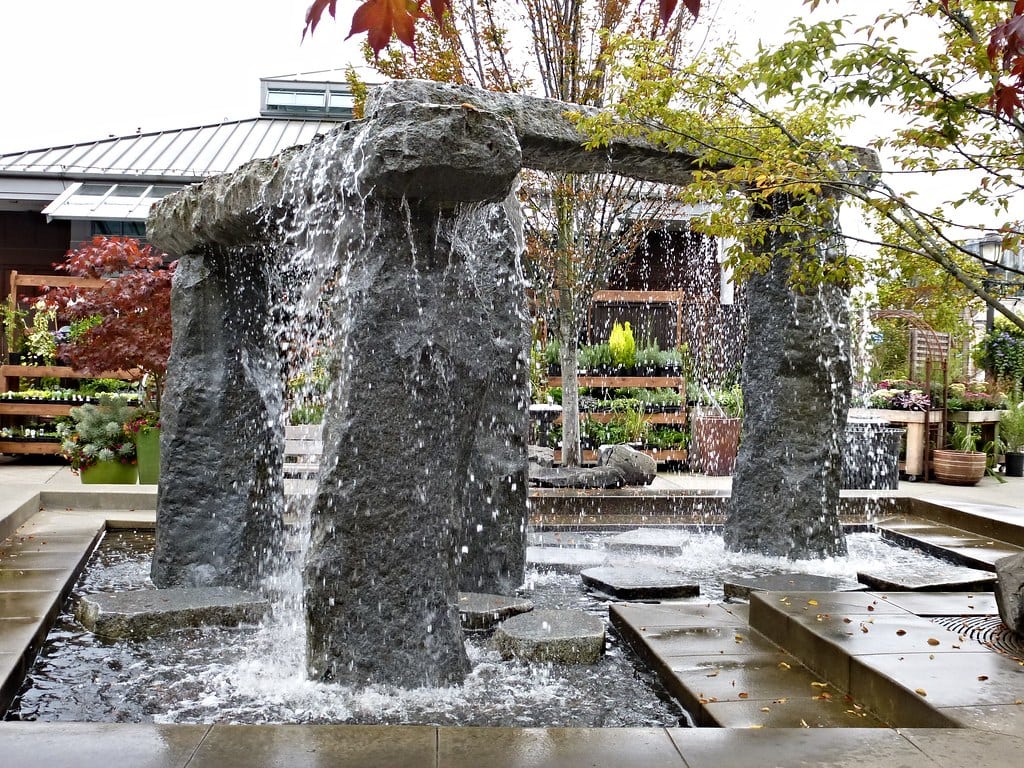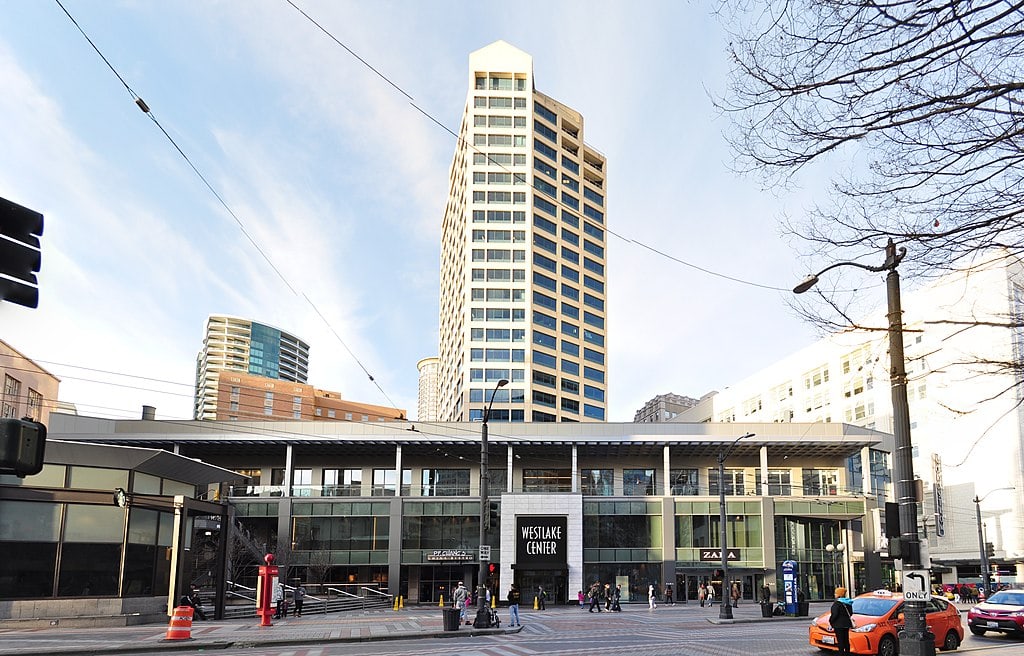Back When Planes Landed on Grass
Pearson Air Museum is the kind of place that still smells like oil-soaked wood and fabric. It's quiet now, most days, but this was once one of the busiest little airfields in the country. No flashing LED signs, no themed gift shop wings - just a hangar, a dirt field, and the long memory of a time when flight still felt new.
Tucked inside the boundaries of Fort Vancouver and managed by the National Park Service, the museum holds stories that don't show up in most airport lounges or history books.
It's part of a living site, one of the oldest continuously operating airfields in the United States. If you're tracking down things to do in Vancouver, Washington, it's hard to get closer to the roots of Pacific Northwest aviation than this.
The Grass Strip Years
Pearson Field didn't start with runways or radio towers. It started with a dirigible. In 1905, Lincoln Beachey crossed the Columbia River in a gasoline-powered airship during the Lewis and Clark Exposition.
By 1911, an airplane had landed on the same field. One year later, the site produced its first aircraft, which was built and flown locally, using parts salvaged and improvised on-site.
That kind of start shaped everything that followed. The field wasn't an outpost of some federal master plan.
It was a working site, used and reshaped by military flights, barnstormers, and aviation enthusiasts. In 1923, the U.S. Army Air Service stationed a permanent presence at Pearson.
That same year, Lt. Oakley Kelly took off from here in a Fokker T-2 and flew nonstop to New York, a 26-hour flight that pushed the limits of the era's planes and fuel systems.
By 1925, the airfield had a name: Pearson Field, honoring Lt. Alexander Pearson, who died in a crash during preparations for a race in Oregon.
This was before radar, before jet engines. The people who flew from here did so with little more than canvas wings and engine noise for navigation.
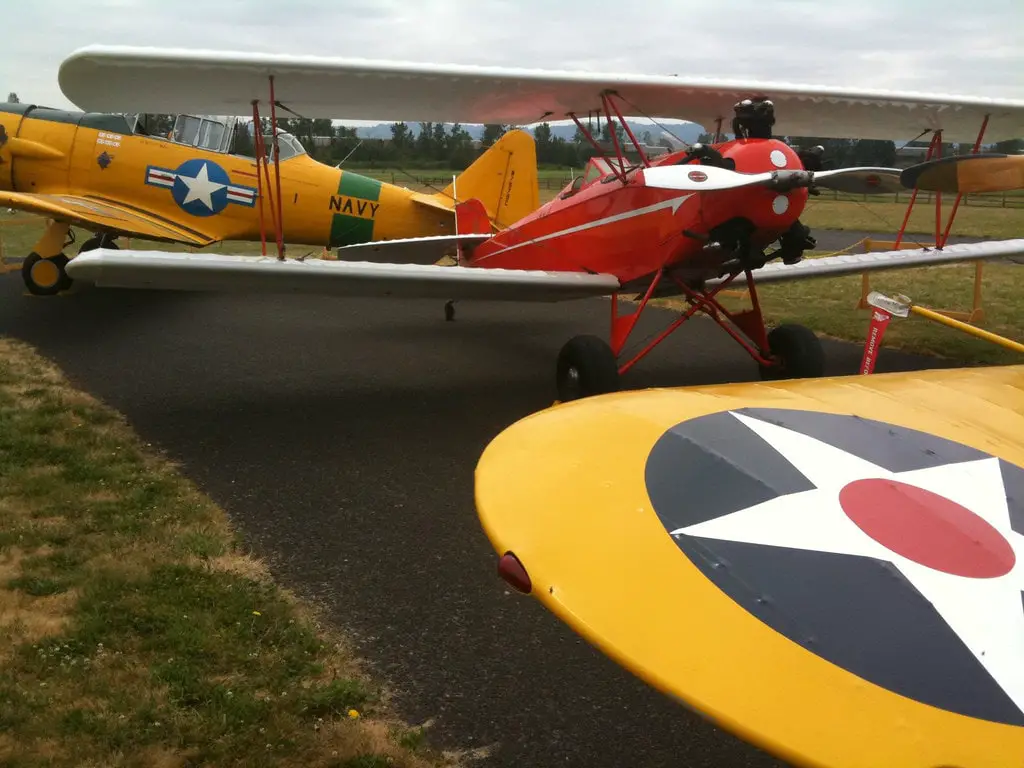
War Contracts and Lumber by the Million
When the United States entered World War I in 1917, airplane production faced a bottleneck few civilians expected: spruce.
The Pacific Northwest had the straight, knot-free lumber needed to build lightweight combat aircraft, but labor disputes and logging slowdowns were threatening supply.
The U.S. military answered by setting up the Spruce Production Division, placing its headquarters right at Vancouver Barracks.
This wasn't some minor side office - it controlled operations at the mill that sat right where Pearson Field and Fort Vancouver are now.
At its peak, the Spruce Mill worked around the clock, seven days a week. Its crews turned out one million board feet of lumber each day.
The aviation museum's "Straight-Grained Soldiers" exhibit tracks this industrial buildup with period artifacts, large-scale dioramas, and documents that show just how embedded the site became in the wartime supply chain.
By 1919, the war had ended, and with it, the military's direct lumber operations. But the airfield stayed in use. The spruce yards were cleared, and that space gradually folded back into Pearson's footprint.
What started as a battlefield supply issue ended up giving Vancouver a permanent aviation presence, shaped more by logistics than policy but lasting long past the armistice.
Hangar Deals and Policy Shifts
Pearson Air Museum formally opened in 1996, but its groundwork came earlier. In 1994, the City of Vancouver entered a cooperative agreement with the National Park Service.
That set up a management system: the city oversaw day-to-day operations while NPS retained ownership.
The structure lasted through early renewals and continued under a sub-agreement with the Fort Vancouver National Site Trust.
They put the museum in a 1921 hangar and didn't bother to dress it up to impress anyone. It kept the open trusses, the worn floor, the kind of stripped-down honesty that felt right for a field built on utility, not flair.
The space worked, until it didn't. Years of patch jobs caught up with it, and the aging infrastructure started to show in flickering lights, tired wiring, and vents that rattled when they kicked on.
That original co-management model broke down in early 2013. On January 1, the City of Vancouver terminated its agreement. Without it, NPS notified the Trust on February 5 that it could no longer manage the facility.
The response came quickly: all privately owned artifacts were removed, except two suspended aircraft that physically couldn't be dismounted.
From that point forward, NPS staffed the museum directly.

Built to Fly, Stored to Last
Inside Pearson's hangar, the aircraft don't just sit as static displays. Many have direct ties to the early decades of U.S. aviation.
There's a 1918 DH-4 Liberty, built to military specs and restored with an eye for raw accuracy rather than polish.
Nearby, a replica Voisin III bomber echoes the French biplanes used in World War I, recreated to the inch by National Park Service volunteers using blueprints and museum-grade materials.
By 2018, one of the more careful additions was the full-scale Curtiss Pusher. It didn't come from a warehouse or surplus sale.
Volunteers built it by hand using materials and construction methods faithful to its 1910s origin. These aren't props. They reflect how aircraft were actually made and flown before aluminum replaced wood and linen.
Outside the main hangar, the Chkalov Monument remains one of the few markers in the United States linked directly to the 1937 Soviet transpolar flight.
Valery Chkalov's crew landed at Pearson after flying from Moscow in a Tupolev ANT-25. The monument was first installed on June 20, 1975, and then moved in the 1980s closer to its current placement.
Its presence at the field bridges a Cold War-era tribute to a prewar milestone grounded in a very specific patch of American turf.
Field Trips, Labs, and Open Hatches
In the spring of 2013, the Pearson Field Education Center opened as a focused learning hub for local students. While the museum already housed restored aircraft, the Education Center shifted its purpose toward interactive learning.
K-12 students rotated through programs that combined flight history with live science demonstrations. The field itself functioned as an outdoor classroom, with aircraft present as visual tools, not background scenery.
Hands-on work became standard. There was a cockpit lab where students could climb into simulator rigs modeled after early flight decks.
There were seminars, including one hosted by the FAA, outlining special air traffic procedures used during events like air shows at Pearson.
The staff leaned into accessibility, setting up activities where visitors, especially younger ones, could touch simplified versions of historical equipment.
A three-year project led by iTech Preparatory wrapped up on February 11, 2025. The students and volunteers had built a cockpit replica of a World War I-era DH-4 Liberty.
Unlike the full-size DH-4 on display, this one was meant to be entered, handled, and studied.
When installed, it joined the museum's growing list of visitor-accessible builds, sitting just across from the aircraft that inspired it. Both remain in public view.

Open Hours, Closed Days, and Walk-In Access
By 2025, Pearson Air Museum will keep a steady, no-frills schedule: Tuesday through Saturday, 9 am to 4 pm. Admission is free.
There's no formal ticketing system or crowd control barriers. Visitors enter through the main hangar doors and move at their own pace, from suspended aircraft to restored engines.
NPS staff provide maps on request, but there are no required tours or scripted intros.
The museum sits at 1115 E 5th Street, inside the grounds of Fort Vancouver National Historic Site. Its location places it on active airfield property - Pearson Field still functions as a working airport under city ownership.
That shared boundary creates a hybrid site where modern flight overlaps with restored aviation history.
The museum hangar stands less than 1,000 feet from the open tarmac, and light aircraft can be seen taxiing during open hours.
One walking route comes via the Spruce Mill Trail. Paved and direct, it connects Fort Vancouver's core to the airfield's historical footprint.
Parking is available nearby, though buses sometimes use overflow lots during event days. In March 2025, the museum closed for a special-use event, announced publicly by Fort Vancouver's official account.
Outside of those rare closures, access remains consistent, free, and mostly self-directed.

🍀

